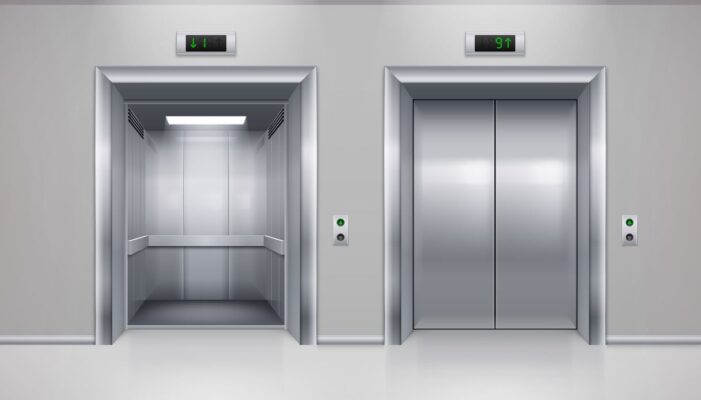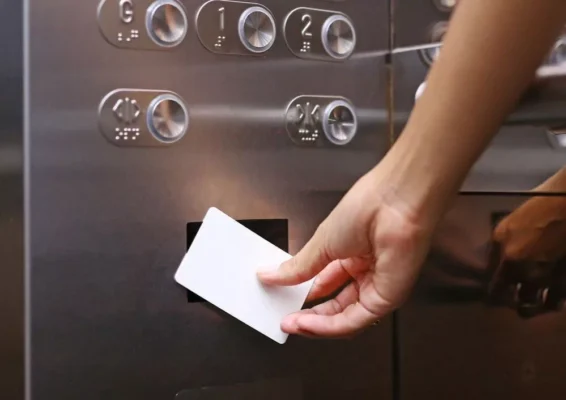
Upgrading your lift may initially seem like a hefty investment, but the long-term benefits far outweigh the cost. Not only will it help you save on energy and repair expenses, but it will also enhance passenger safety. However, many are unsure when it’s time to modernize their elevator lift for home.
One clear sign is when you begin facing frequent, expensive service calls. If the cost of repairs and maintenance starts to exceed the benefits you’re getting from regular use, it’s a good indication that an upgrade is needed. Knowing when to change is essential for keeping your building safe, efficient, and up-to-date. Here’s a helpful guide to show you when it’s the right time to upgrade your mini lift for your home.
What is The Elevator Lifespan?
With proper care and maintenance, elevators can serve you for many years. An elevator can last between 35 and 45 years when regularly serviced and repaired. However, like any mechanical system, elevators will eventually experience wear and tear, leading to decreased performance and the need for replacement. Here’s a breakdown of the typical lifespans for different types of elevators:
- Hydraulic Lifts: They generally last between 20 to 25 years and require regular maintenance.
- Screw and Nut-Driven Home Lifts: These lifts also have a lifespan of 20 to 25 years if properly maintained.
- Pneumatic Vacuum Elevators: These elevators last around 15 to 20 years and have consistent servicing.
- Belts and Rope-Driven Home Lifts: These can last 20 to 30 years, depending on usage and upkeep.
For building managers and owners, it’s crucial to be aware of the specific lifespan of your elevator lift for the home so you can plan for upgrades and replacements when the time comes.
Signs That Your Elevator Needs an Upgrade
- Frequent Breakdowns: Repeated issues or long periods of downtime indicate it’s time for an upgrade or replacement.
- Slow Performance: A decrease in speed or delayed door responses can become an inconvenience, especially in high-traffic buildings.
- Outdated Technology: Elevators over 15-25 years old may pose safety risks, and regular inspections are vital, especially in busy buildings.
- Compliance Issues: Changes in building codes or safety regulations may require an upgrade to ensure legal compliance and occupant safety.
- Increased Energy Consumption: Older elevators often use more energy. Upgrading to an energy-efficient model can save on operating costs and reduce your environmental impact.
Benefits of Upgrading Your Elevator

- Enhanced Safety: Modernizing your home elevator lift meets current safety standards, offering peace of mind for you and your tenants.
- Better Performance: New elevators run more smoothly, with features like predictive maintenance to prevent breakdowns. They also offer faster speeds and shorter wait times, improving efficiency and satisfaction.
- Energy Efficiency: Upgraded systems use regenerative drives and LED lighting to reduce energy consumption, lowering costs and your building’s carbon footprint.
- Improved Accessibility: New elevators are designed with accessibility in mind, featuring larger cabins, wider doors, and options like Braille buttons and voice guidance for all users.
- Increased Property Value: A modern, well-functioning elevator boosts your property’s appeal and market value, making it more attractive to tenants and investors.
Upgrading your elevator is a smart investment that enhances safety, performance, energy efficiency, accessibility, and property value.
Updating the Look of Your Old Elevator
Instead of replacing your entire elevator system, consider modernizing specific components. Hiring a professional home lift company in India to conduct thorough testing and inspections is essential to make an informed decision. When giving your elevator a facelift, focus on these key areas:
- Elevator Doors: Upgrade the door models at the landings, inside the elevator, and on the gates.
- Control Panels: The buttons on the control panel can wear out over time. Replacing the panel is a great way to improve its functionality and appearance.
- Lighting: Fresh lighting can significantly affect the elevator’s look and feel.
- Handrails: If your elevator has handrails, updating them can enhance safety and aesthetics.
- Call Buttons: New call buttons improve user experience and ensure responsiveness.
- Elevator Cab Flooring: Choose durable, attractive flooring that suits your building’s style.
- Ceiling and Car Panels: Refreshing the ceiling and car panels can modernize the elevator’s interior.
- Wall Panels: New wall panels can give the elevator a sleek, updated look.
Keeping the elevator system’s various parts updated during modernization is crucial to ensuring your building stays current in the digital age. It improves the elevator’s functionality and enhances the overall user experience.
Factors to Consider Before an Elevator Upgrade
Is it time to upgrade your lift maintenance? Aside from consulting with lift suppliers, keep an eye out for these signs:
- Old Age: If your lift is older than 15 years, it’s time to upgrade. Depending on its condition, a replacement may be necessary after 20 years. Have a professional check its functionality.
- Frequent Problems: Stuck doors, malfunctioning call buttons, or peeling trim are all signs your lift needs attention.
- Jerky Movements: Lifts should move smoothly. If yours jolts or shakes, it’s time for an inspection.
- Hard-to-Find Parts: If your maintenance team struggles to find replacement parts, it’s likely time to consider an upgrade or replacement.
- Costly Repairs: Ongoing repairs can become expensive, especially when parts are scarce. This is another sign it’s time for an upgrade.
- Poor Levelling: If your lift doesn’t align perfectly with the floor, it could cause safety issues and should be addressed promptly.
These issues all need investigation, so make sure to get your lift inspected.
The Process of Upgrading an Elevator
Upgrading your elevator involves several steps to improve performance, safety, and efficiency. Here’s a quick overview:
- Professional Assessment: A qualified elevator technician will inspect the current system, identify issues, and check if it meets modern safety standards.
- Identifying Upgrades: Based on the assessment, the technician will recommend areas for improvement, such as outdated components or energy efficiency, and help prioritize them according to your budget and needs.
- Planning and Installation: A detailed upgrade plan will be created to minimize disruption. Installation will occur during off-peak hours or in phases to avoid affecting building operations.
- Post-Upgrade Testing and Maintenance: The system will undergo thorough testing after the upgrade to ensure optimal performance. Ongoing maintenance and inspections will be scheduled to maintain safety and reliability.
These steps ensure a safer, more efficient elevator system that enhances the user experience and building functionality.
Conclusion – SWIFT Lifts Is Here For Your Elevator Upgrades

Timely elevator upgrades are essential for maintaining safety, efficiency, and overall performance. Regularly assessing your current system and addressing outdated components or performance issues ensure a smoother, more reliable experience for all building occupants.
If you’re ready to take the next step, consider investing in the necessary improvements. SWIFT Lifts offers solutions to suit various needs, including the SWIFT Lite and SWIFT Pro models, which allow you to customize your lift system for maximum efficiency and safety. Upgrade today and enjoy the benefits of a modern, reliable elevator system with the best home lift company in India!
FAQs
Smart lifts use cutting-edge technology to optimize traffic flow, decrease wait times, and enhance energy efficiency. They adapt to building usage patterns, enhancing convenience and sustainability. Explore SWIFT Lifts’ cutting-edge solutions for smarter, more efficient elevators!
Modern elevators have features like automatic rescue devices, seismic sensors, advanced fire safety systems, and door sensors to prevent accidents.
Green building standards promote energy-efficient designs, encouraging elevators with regenerative drives, low-power modes, and sustainable materials to minimize environmental impact.
Elevators provide critical accessibility for people with mobility challenges, offering smooth and safe access to different building levels. Features like voice activation and wider doors help enhance inclusivity. Make your building more accessible with SWIFT Lifts’ customizable lift systems!
Destination control systems improve efficiency by grouping passengers based on their desired floors, reducing wait times, and optimizing elevator usage in busy, high-rise buildings.
Get in Touch!










